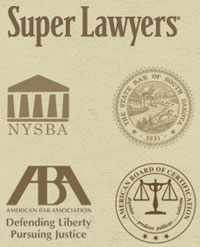Because of unique nuisance statutes and case law, North Dakota is what I tongue-in-cheek call a nuisance friendly state. For background on this interesting topic, please see my article in the Bakken Weekly, “Nuisance Laws on the Bakken.” The present article discusses a common defense simply stated as, ‘But I got the permit. Why am I a nuisance?’
North Dakota statutes protect one from a lawsuit in nuisance if another statute grants authority to act in a particular manner. Those statutes are strictly applied to preserve the meaning legislature gave to them. However, in extreme cases the party may yet be subject to a suit in nuisance if the act allowed by statute is performed in a negligent or unreasonable manner. For example, a statute granted the City of Dickinson the authority to operate a sewage system as part of its governmental function. The statute even allowed the city to discharge sewage into any river.
“The offense was so great that a chemist who was called as a witness for the plaintiff testified, without objection, that the hydrogen-sulphide gas, which the city engineer said was the source of the noxious odor, is about 17% heavier than air; that in water it has a disagreeable taste, and that when inhaled it causes nausea; that it is poisonous and will cause headaches if inhaled in sufficient quantities.”
That said, a nuisance claim was successfully brought against the city because the amount was so excessive that it was deemed unreasonable. The court said that “by casting its sewage into the river with improper and insufficient treatment for a long period of time, the city was remiss in its duty and it may not now rely upon its legislative immunity to protect it from responding in damages.”
Let us look at a nuisance lawsuit further. North Dakota derived the statute N.D. Cent. Code Ann. § 42-01-12 that states “Nothing which is done or maintained under the express authority of a statute shall be deemed a nuisance,” from California, and in doing so, North Dakota has determined that if you are conducting business in a district zoned for that type of activity, you are not completely immune from a nuisance lawsuit. Take the famous grain terminal case for example,
“Harmon Motors is located in an area zoned C-2 “a general commercial district,” and GTA was located in an area zoned N-1 “a light industrial district.” No evidence was introduced that GTA was operating in violation of any city zoning ordinance or that GTA was in violation of any health ordinances. For that matter, the Williston zoning ordinance passed in 1970 provides for an exception for those businesses which were in operation when the zoning ordinance was adopted and GTA was in operation when that zoning ordinance was adopted. This, however, is not per se conclusive of the issues.”
The court indicated that even though the ‘offending party’ had been both grandfathered in as well as in compliance with city zoning ordinances, all this did not mean that the offending party was in the clear. In this case North Dakota also considered whether the party making the complaint has “come to the nuisance,” that is, moved into an area where a nuisance-like activity already existed. North Dakota courts gave less favorability to the complaining party and indicated that the burden of proof required to defeat the “coming to the nuisance” doctrine is very high.
The defense of ‘I got the permit. Why am I a nuisance?’ nevertheless goes even further in North Dakota than other jurisdictions. An oil drilling operation had been flaring the excess gas it produced. This caused diminished air quality and excessive odors. But the court in Kartch v. EOG Res., Inc., determined that the drilling operation was not a nuisance because the operators acted within the guidelines set forth in the applicable statute and their practices were customary in the oil industry in North Dakota.
Special consideration is also given to agricultural operations. If the agricultural operation has been in operation for more than one year and was not a nuisance at the time it began it shall not become a nuisance. Additionally, North Dakota recently passed a law that bars other laws from limiting farmer’s rights to “employ agricultural technology, modern livestock production and ranching practices.” This was a necessary modernization to current statutes protecting farmers from surrounding urban developments.
Now to be sure, no legal system would be in proper order without some ambiguity, and as evidenced above there are exceptions to every rule. The takeaway: Just having the permit is not enough. And just being in statutory compliance is not enough. A claim in nuisance could still be successful in court.
David Ganje practices law in the area of natural resources, environmental and commercial law in South Dakota and North Dakota. His website is Lexenergy.net.





